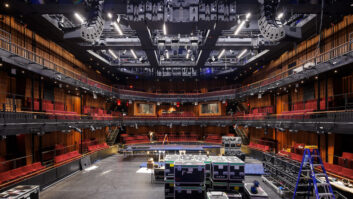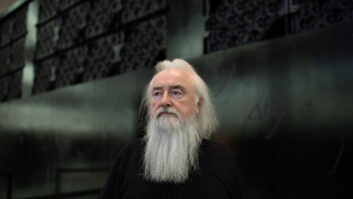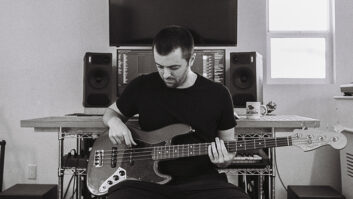Janet Cardiff’s Forty Part Motet features 40 B&W DM303 loudspeakers arranged in an oval in the Fuentiduena Chapel at the Metropolitan Museum of Art’s Cloister Museum in upper Manhattan.

New York, NY—Since 1938, New York’s Metropolitan Museum of Art has celebrated the art and architecture of medieval Europe with its Cloisters Museum, a separate museum space made up of pieces of five medieval abbeys, which were brought over from Spain, France and Italy and rebuilt on the northern tip of Manhattan in the heart of Fort Tyron Park. Visitors to the museum have the unique opportunity to walk among chapels, gardens and other worship spaces from all over Europe, and see a large collection of medieval artifacts, including the famous Hunt of the Unicorn Tapestries (dated to 1495 to 1505, South Netherlands).
As part of a year-long celebration of the Cloisters Museum’s 75th Anniversary, the museum is hosting its first modern art installation, which captures one of the more emotional aspects of visiting a religious abbey—music.
The artwork, titled The Forty Part Motet (2001) by Janet Cardiff, features a circle of 40 Bowers & Wilkins DM303 loudspeakers, arranged in an oval in the museum’s Spanish Fuentiduena Chapel, and plays a recording from the 2001 performance of Thomas Tallis’s motet Spem in alium by the Salisbury Cathedral Choir. Upon entering the chapel, you hear the 14-minute recording as a whole, but as you approach each speaker individually, you realize that each speaker is playing one part.
British manufacturer Bowers & Wilkins provided 40 loudspeakers for the installation.

Walking around, you are brought into some of the most intimate moments of the performance, as you can hear each section individually, down to the moments when the singers take breaths, rest for a soloist singing from a loudspeaker on the other side of the room, or harmonize with the entire choir. Each spot in the chapel, either close to one specific speaker or seated in the center of the room, creates a unique experience for the listener.
“Visitors are encouraged to walk among the loudspeakers to hear the individual unaccompanied voices—bass, baritone, tenor, alto and child soprano—one part per speaker—as well as stand in the middle of the configuration of the speakers and experience the polyphonic choral effect of the combined singers in an immersive experience,” explained curator Anne Strauss.
Dozens of visitors to the Cloister Museum walk among the loudspeakers for the Forty Part Motet sound installation on Sunday, November 3, 2013. The exhibit will be on display until December 8.

The artist, Janet Cardiff, came up with the idea for the sound installation after hearing Tallis’ motet on CD, and became frustrated with the inability to clearly hear each part. Cardiff created a very specific recording process in 2000, when she recorded the choir at the Salisbury festival in the nearby cathedral, with blankets and curtains lining the walls to create a ‘dead’ sound. The motet is divided into eight choirs of five, so to separate each part, Cardiff had each group stand five feet apart, and had each of the 59 singers wear their own high-quality lavaliere mic, with each cable running to a truck outside the cathedral, where the vocals were mixed into forty tracks (the sopranos, sung by children, were grouped together for one track).
“It has been a long-term desire of mine to bring Janet Cardiff’s exceptionally powerful sound installation to the Metropolitan Museum in this unique setting,” Strauss said. “In selecting the space, we zeroed in on the Fuentiduena Chapel at The Cloisters, with its exquisite acoustics and evocative architectural setting, in contrast to the setting in which the piece is most typically presented—that of a white cube or neutral space.”
The recording plays on a loop, with a three-minute introduction of the choir setting up before the actual 11-minute song.
“The work has a particular emotional resonance, and one is meant to have some form of emotional experience when engaging with the piece,” Strauss said. “I hope that we have provided a setting in which visitors may respond individually to the work’s ethereal, stirring, enthralling and haunting characteristics.”
Along with the 40 B&W speakers, the installation uses Yamaha XM series amplifiers and plays the tracks through Digital Performer. Cardiff’s The Forty Part Motet is ongoing at the MET Cloisters museum until December 8, 2013.
Metropolitan Museum of Art, Cloisters
http://www.metmuseum.org/visit/visit-the-cloisters







